

Andersonville

reproduction of prison stockade
The Andersonville National Historic Site, located near Andersonville, Georgia, preserves the former Camp Sumter (also known as Andersonville Prison) a Confederate prisoner-of-war camp during the American Civil War. Most of the site lies in southwestern Macon County, adjacent to the east side of the town of Andersonville. As well as the former prison, the site also contains the Andersonville National Cemetery and the National Prisoner of War Museum.
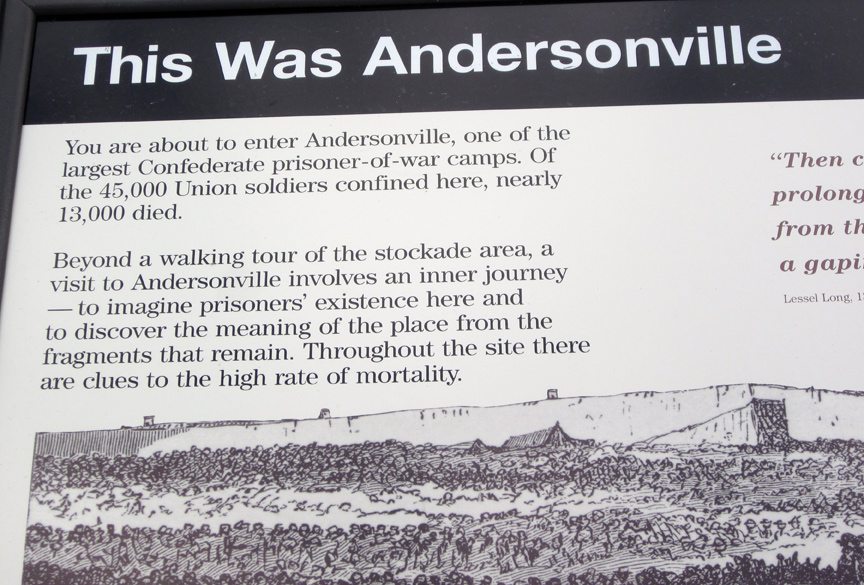
The site is an iconic reminder of the horrors of Civil War prisons. It was
commanded by Major Henry Wirz, who was tried and executed after the war for
murder. It was overcrowded to four times its capacity, with inadequate water
supply, overcrowding, reduction in food rations, and unsanitary conditions. Of
the approximately 45,000 Union prisoners held at Camp Sumter during the war,
nearly 13,000 men died. The chief causes of death were scurvy, diarrhea, and
dysentery. Friends provided care, food, and moral support for others in their
social network, which helped a prisoner survive.
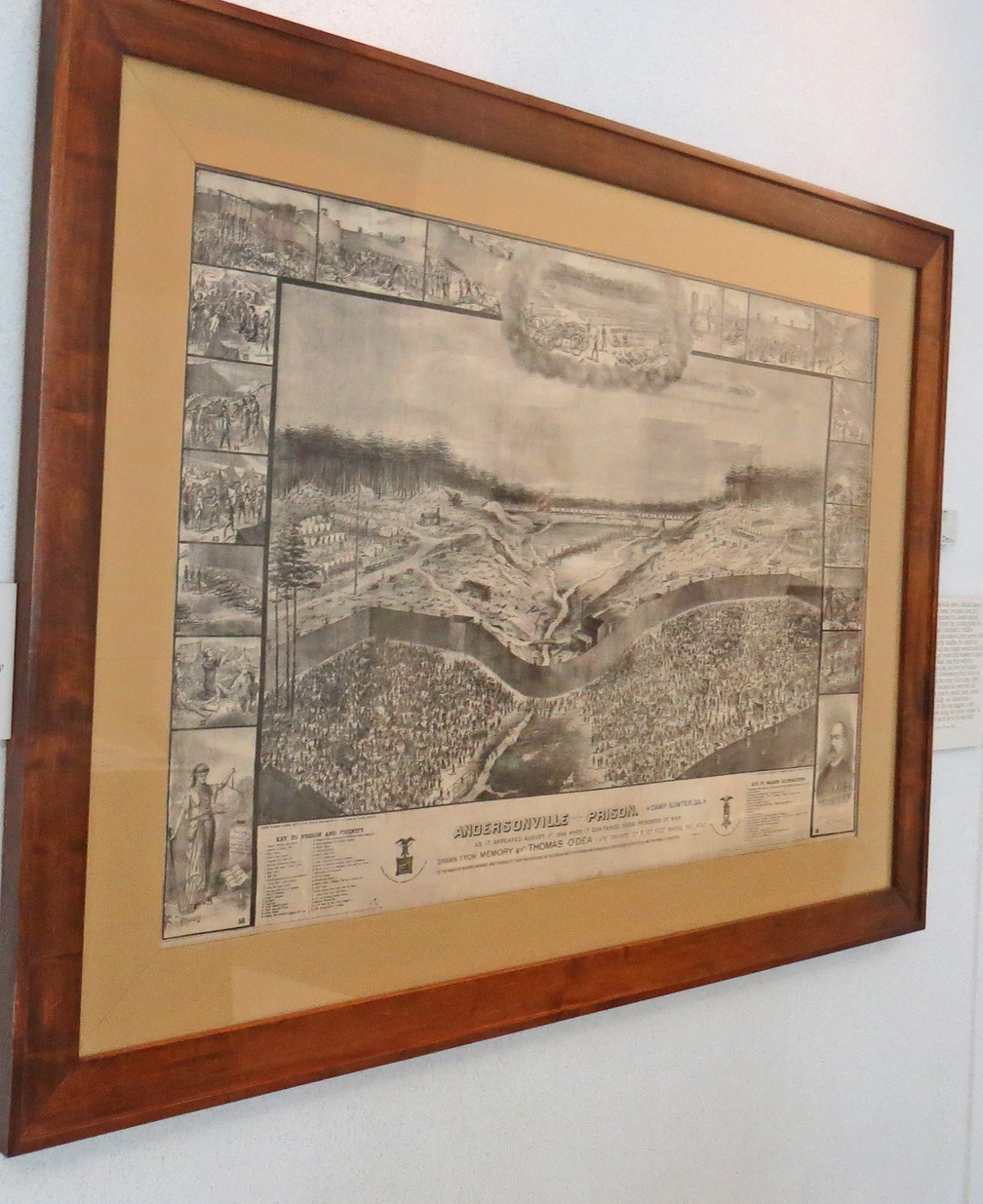
The prison, which opened in February 1864, originally covered about 16.5 acres
(67,000 m2) of land enclosed by a 15-foot (4.6 m) high stockade. In June 1864 it
was enlarged to 26.5 acres (107,000 m2). The stockade was in the shape of a
rectangle 1,620 feet (490 m) by 779 feet (237 m). There were two entrances on
the west side of the stockade, known as "north entrance" and "south entrance".

A prisoner described his entry into the prison camp: "As we entered the place, a
spectacle met our eyes that almost froze our blood with horror, and made our
hearts fail within us. Before us were forms that had once been active and
erect;—stalwart men, now nothing but mere walking skeletons, covered with filth
and vermin. Many of our men, in the heat and intensity of their feeling,
exclaimed with earnestness. "Can this be hell?" "God protect us!" and all
thought that He alone could bring them out alive from so terrible a place. In
the center of the whole was a swamp, occupying about three or four acres of the
narrowed limits, and a part of this marshy place had been used by the prisoners
as a sink, and excrement covered the ground, the scent arising from which was
suffocating. The ground allotted to our ninety was near the edge of this
plague-spot, and how we were to live through the warm summer weather in the
midst of such fearful surroundings, was more than we cared to think of just
then."
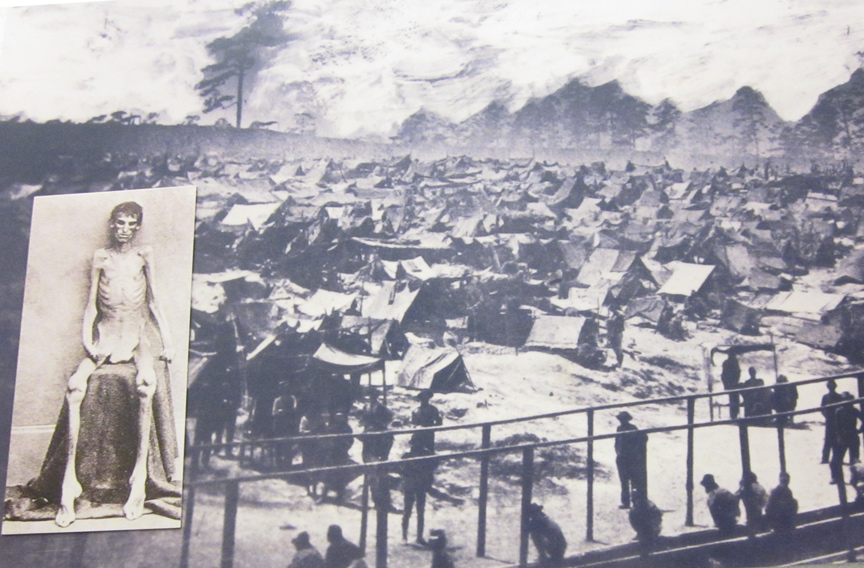
Further descriptions of the camp can be found in the diary of Ransom Chadwick, a
member of the 85th New York Infantry Regiment. Chadwick and his regimental mates
were taken to the Andersonville Prison, arriving on April 30, 1864.
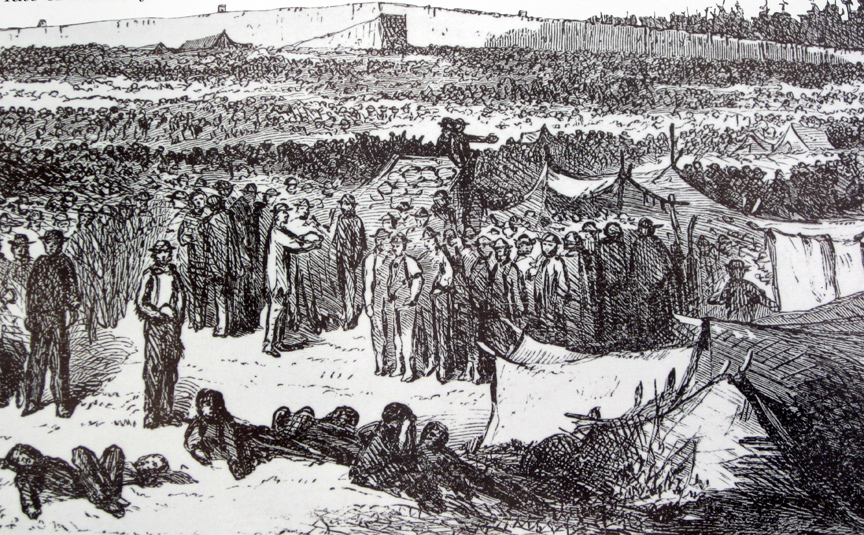
Father Peter Whelan arrived on 16 June 1864 to muster the resources of the
church and help provide relief to the prisoners.
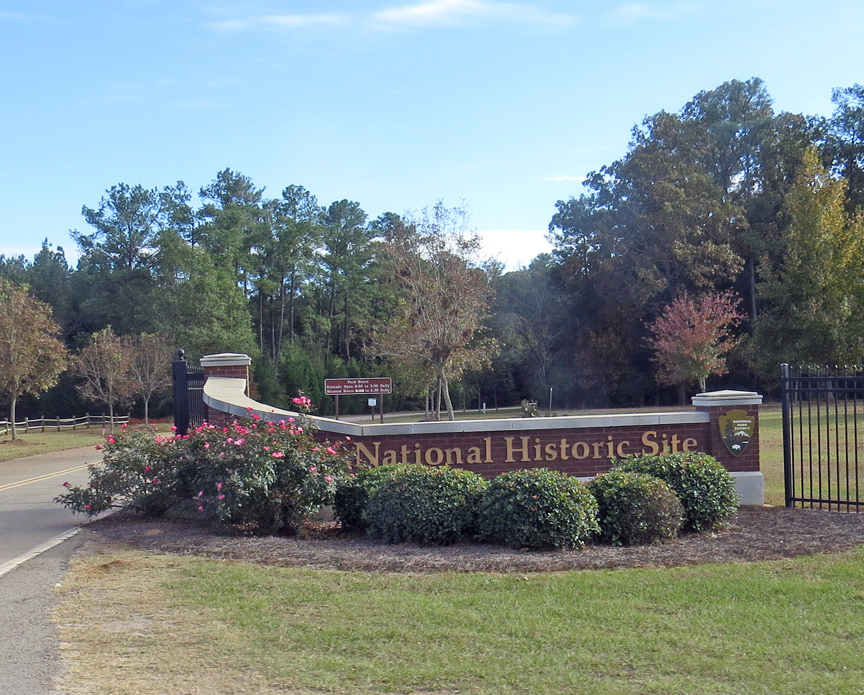
National Historic Site
At Andersonville, a light fence known as "the dead line" was erected approximately 19 feet (5.8 m) inside the stockade wall. It demarcated a no-man's land that kept prisoners away from the stockade wall, which was made of rough-hewn logs about 16 feet (4.9 m) high. Anyone crossing or even touching this "dead line" was shot without warning by sentries in the pigeon roosts.
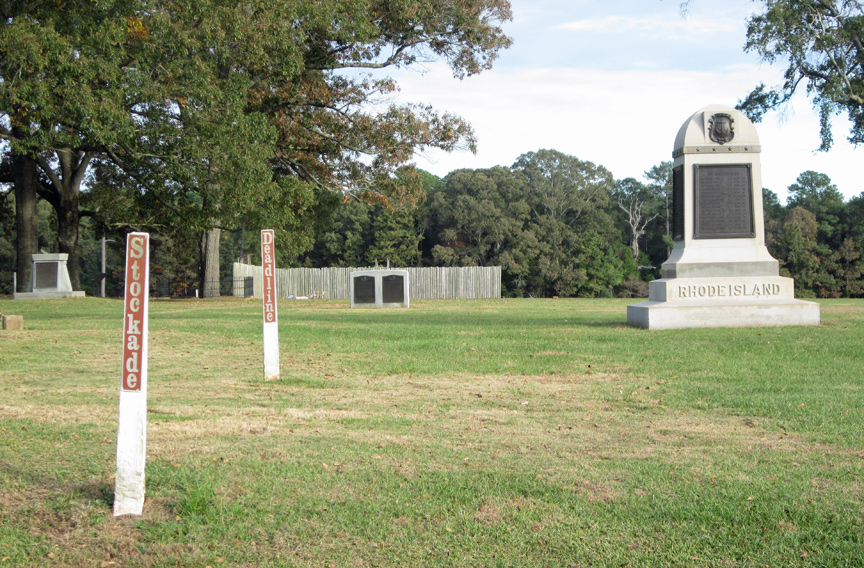
posts define the location of the prison stockade
At this time in the war, Andersonville Prison was frequently undersupplied with food. This applied both to prisoners and the Confederate personnel within the fort. However, it is clear that the prisoners received much less than the guards who were not emaciated like the prisoners were and did not die from scurvy (vitamin C deficiency), probably the main cause of mortality (along with diarrhea caused by living in filth and drinking water from a creek filled at all times with fecal material from thousands of sick and dying men). Even when sufficient quantities were available, the supplies were of poor quality and poorly prepared. Although the prison was surrounded by forest, very little wood was allowed to the prisoners. This and the lack of utensils made it almost impossible for the prisoners to cook the main food they received, poorly milled corn flour. During the summer of 1864 Union prisoners suffered greatly from hunger, exposure and disease. Within seven months, about a third of them died from what was diagnosed as dysentery and scurvy and were buried in mass graves, the standard practice by Confederate prison authorities at Andersonville. In 1864 the Confederate Surgeon General asked Joseph Jones, an expert on infectious disease, to investigate the high mortality rate at the camp. He concluded that it was due to "scorbutic dysentery" (bloody diarrhea caused by vitamin C deficiency). Drisdelle claims that hookworm disease, a condition not recognized or known during the Civil War was the major cause of much of the mortality.However, the signs and symptoms reported by the prisoners are identical with those of scurvy and rampant diarrhea, not of hookworm infestation.
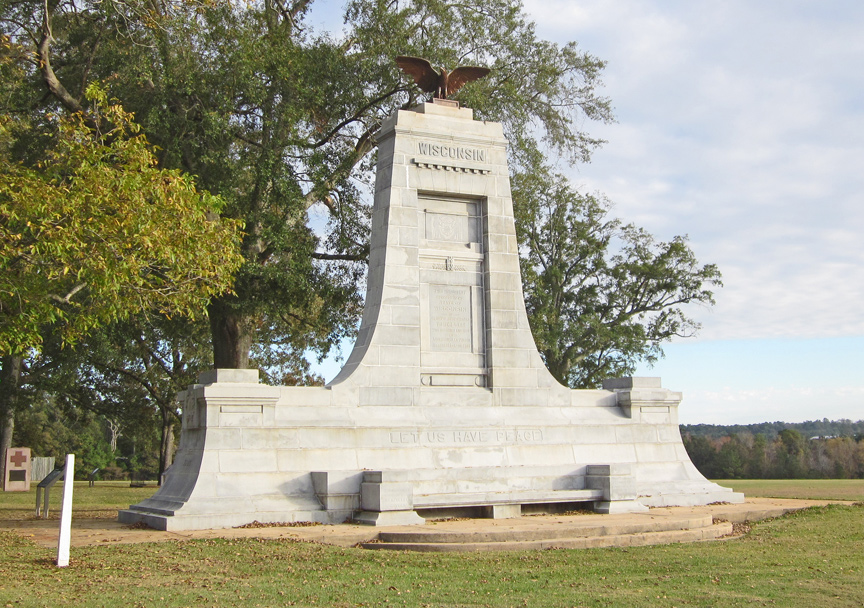
in memory of the soldiers from Wisconsin who died in this stockade
The water supply from Stockade Creek became polluted when too many Union prisoners were housed by the Confederate authorities within the prison walls. Part of the creek was used as a sink and the men were forced to wash themselves in the creek.
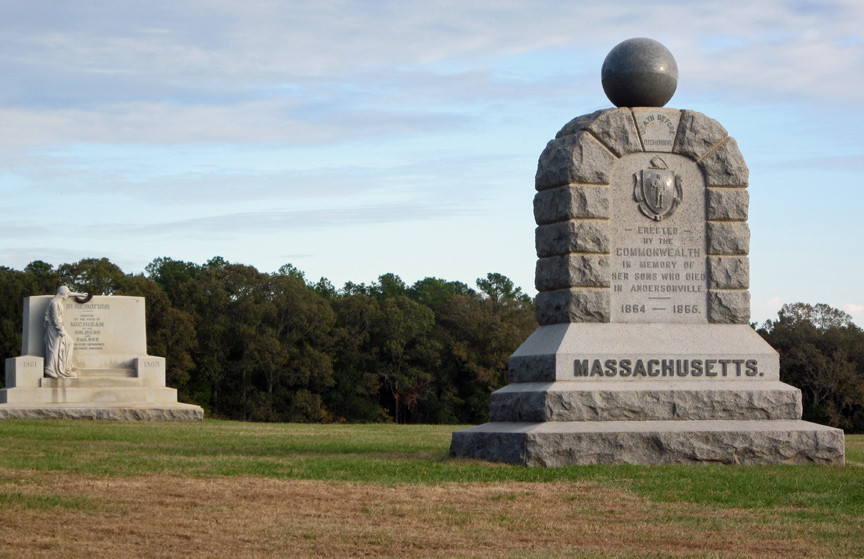
Massachusetts Memorial
The guards, disease, starvation and exposure were not all that prisoners had to deal with. A group of prisoners, calling themselves the Andersonville Raiders, attacked their fellow inmates to steal food, jewelry, money and clothing. They were armed mostly with clubs and killed to get what they wanted. Another group rose up, organized by Peter "Big Pete" Aubrey, to stop the larceny, calling themselves "Regulators". They caught nearly all of the Raiders, who were then tried by the Regulators' judge, Peter McCullough, and jury, selected from a group of new prisoners. This jury, upon finding the Raiders guilty, set punishment that included running the gauntlet, being sent to the stocks, ball and chain and, in six cases, hanging.
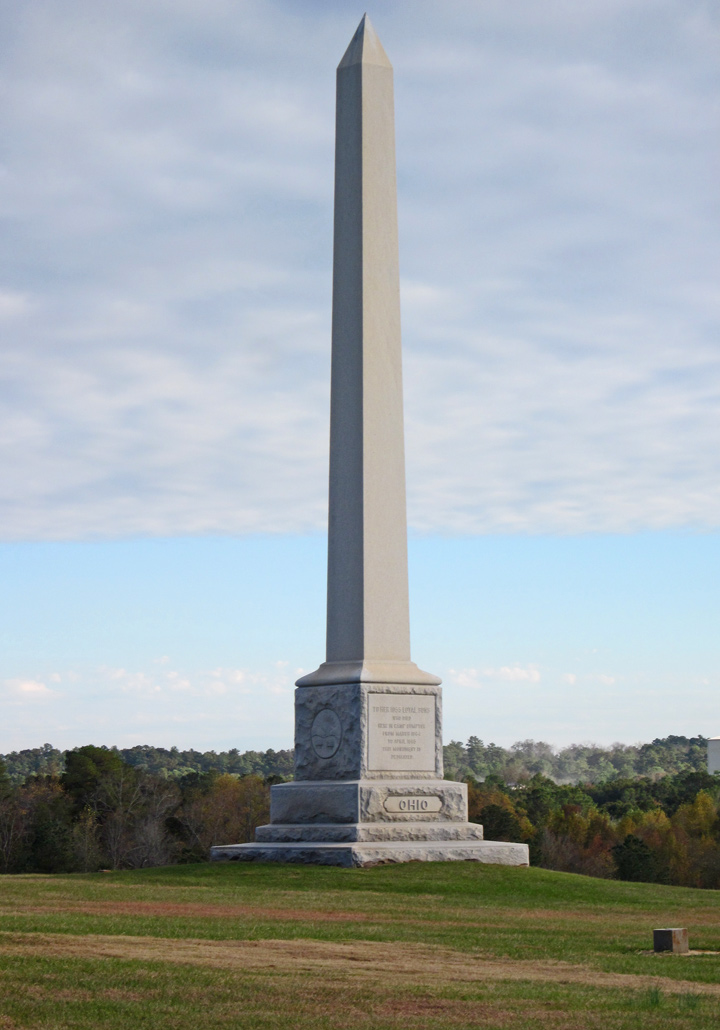
Ohio Memorial
The conditions were so poor that in July 1864 Captain Wirz paroled five Union soldiers to deliver a petition signed by the majority of Andersonville's prisoners asking that the Union reinstate prisoner exchanges. The request in the petition was denied and the Union soldiers, who had sworn to do so, returned to report this to their comrades.
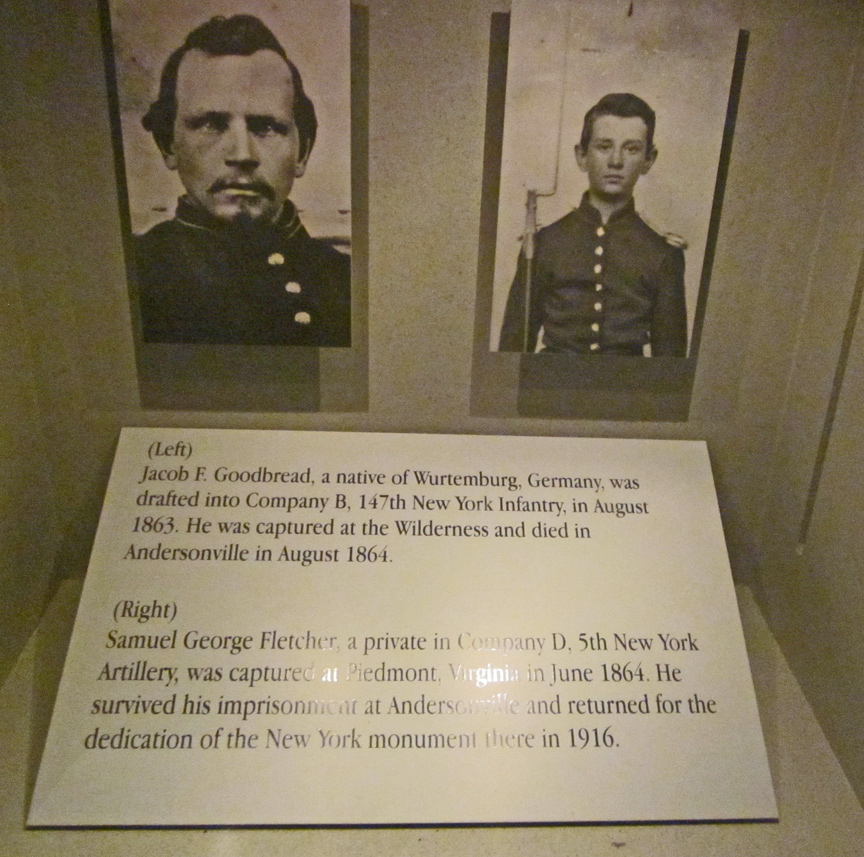
In the latter part of the summer of 1864 the Confederacy offered to
unconditionally release prisoners if the Union would send ships (Andersonville
is inland, with access possible only via rail and road) to retrieve them. In the
autumn of 1864, after the capture of Atlanta, all the prisoners who were well
enough to be moved were sent to Millen, Georgia, and Florence, South Carolina.
At Millen, better arrangements prevailed, and after General William Tecumseh
Sherman began his march to the sea, the prisoners were returned to
Andersonville, where conditions were somewhat improved.
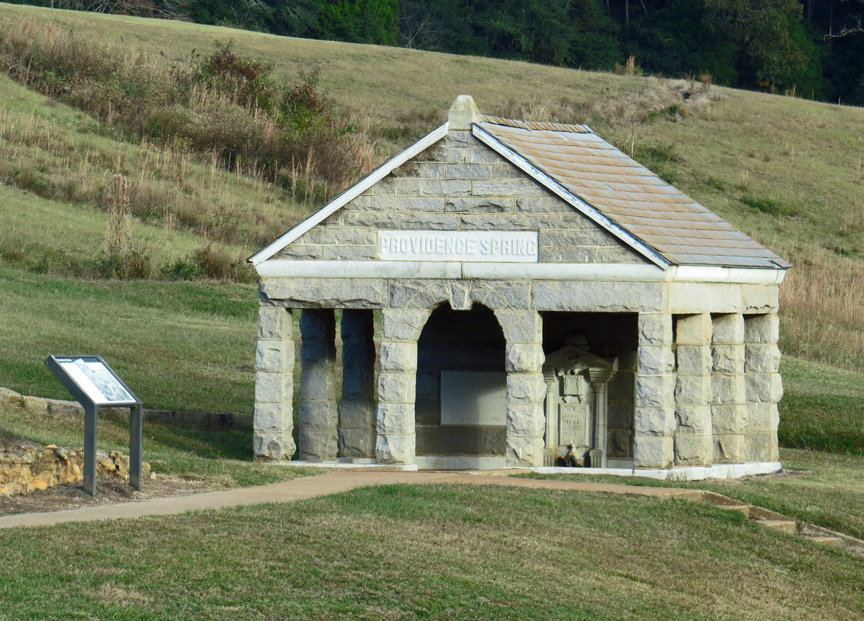
Providence Springs
During the war, 45,000 prisoners were received at Andersonville prison, and of these nearly 13,000 died. The nature of the deaths and the reasons for them are a continuing source of controversy among historians. Some contend that they were a result of deliberate Confederate war crimes toward Union prisoners and others that they were the result of disease promoted by severe overcrowding, the shortage of food in the Confederate States, the incompetence of the prison officials, and the refusal of Union authorities to reinstate the prisoner exchange, thus overfilling the stockade.
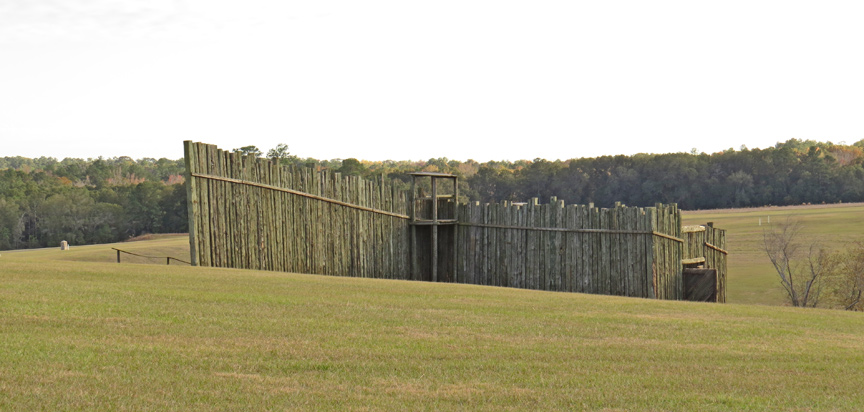
reconstructed stockade
A young Union prisoner, Dorence Atwater, had been chosen to record the names and numbers of the dead at Andersonville for the use of the Confederacy and the federal government after the war ended. He believed the federal government would never see the list, and was right in this assumption, as it turned out. He sat next to Henry Wirz, who was in charge of the prison pen, and secretly kept his own list among other papers. When Atwater was released, he put the list in his bag and took it through the lines without being caught. It was published by the New York Tribune when Horace Greeley, the owner, learned that the federal government had refused and given Atwater much grief. It was Atwater's opinion that Andersonville was indeed trying to make soldiers unfit to fight.
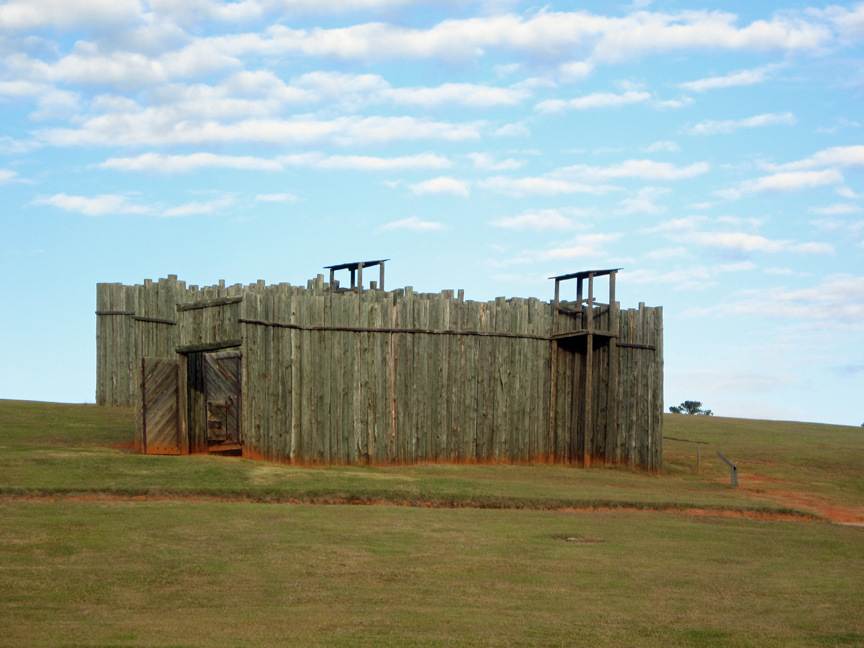
Andersonville's decrepit conditions were chronicled in the diary of P.O.W.
Newell Burch. Burch of the 154th New York Volunteer Infantry, was captured on
the first day of the Battle of Gettysburg and imprisoned at Belle Isle and then
Andersonville. He is credited with being the longest held Union prisoner of war
during the Civil War, a total of 661 days in Confederate hands. His diary is in
the collection of the Dunn County Historical Society in Menomonie, Wisconsin,
and a mimeographed copy is in the Wisconsin Historical Society archives. Andersonville Prison was liberated in May 1865.
After the war, Henry Wirz, commandant of the inner stockade at Camp Sumter, was
tried by a military tribunal on charges of conspiracy and murder. The trial was
presided over by Union General Lew Wallace and featured chief Judge Advocate
General (JAG) prosecutor Norton Parker Chipman.
A number of former prisoners testified on conditions at Andersonville, many
accusing Wirz of specific acts of cruelty, for some of which Wirz was not even
present in the camp. The court also considered official correspondence from
captured Confederate records. Perhaps the most damaging was a letter to the
Confederate surgeon general by Dr. James Jones, who in 1864 was sent by Richmond
to investigate conditions at Camp Sumter. Jones had been appalled by what he
found and his graphically detailed report to his superiors all but closed the
case for the prosecution. Wirz presented evidence that he pleaded to Confederate
authorities to try to get more food and tried to improve the conditions for the
prisoners inside.
Wirz was found guilty and was sentenced to death, and on November 10, 1865, he
was hanged. Wirz was the only Confederate official to be tried and convicted of
war crimes resulting from the Civil War (but see reference to Champ Ferguson).
The revelation of the prisoners' sufferings was one of the factors that shaped
public opinion in the North regarding the South after the close of the Civil
War.
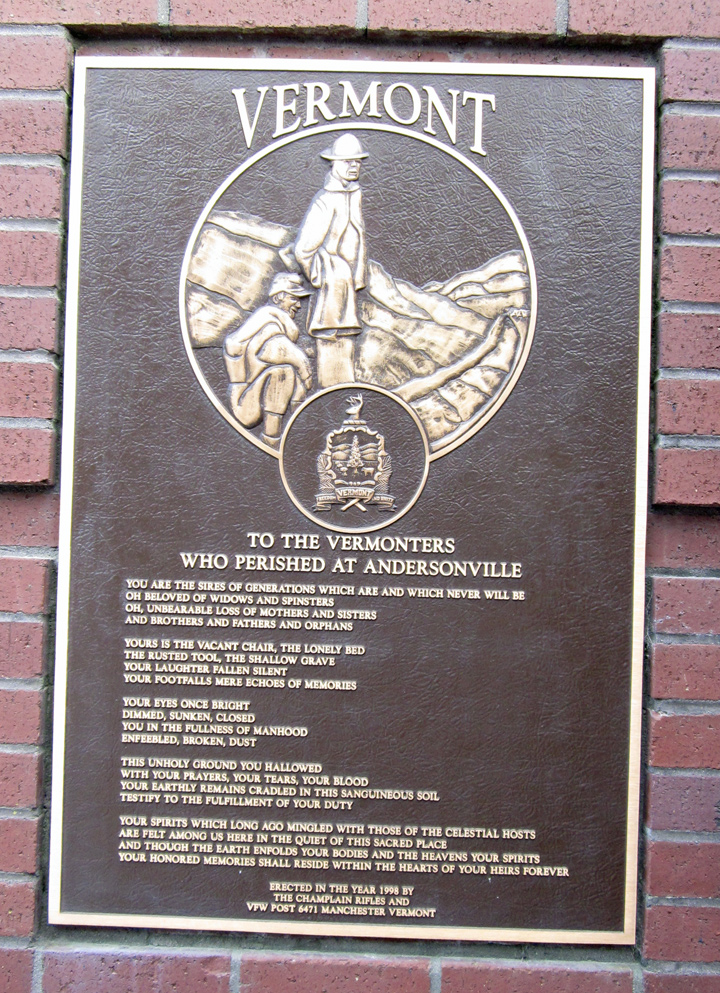
Vermont Memorial
In 1890, the Grand Army of the Republic, Department of Georgia, bought the site
of Andersonville Prison through membership and subscriptions. In 1910 the site
was donated to the federal government by the Woman's Relief Corps (auxiliary to
the Grand Army of the Republic).
National Prisoner of War Museum.
Text from Wikipedia
National Prisoner of War Museum
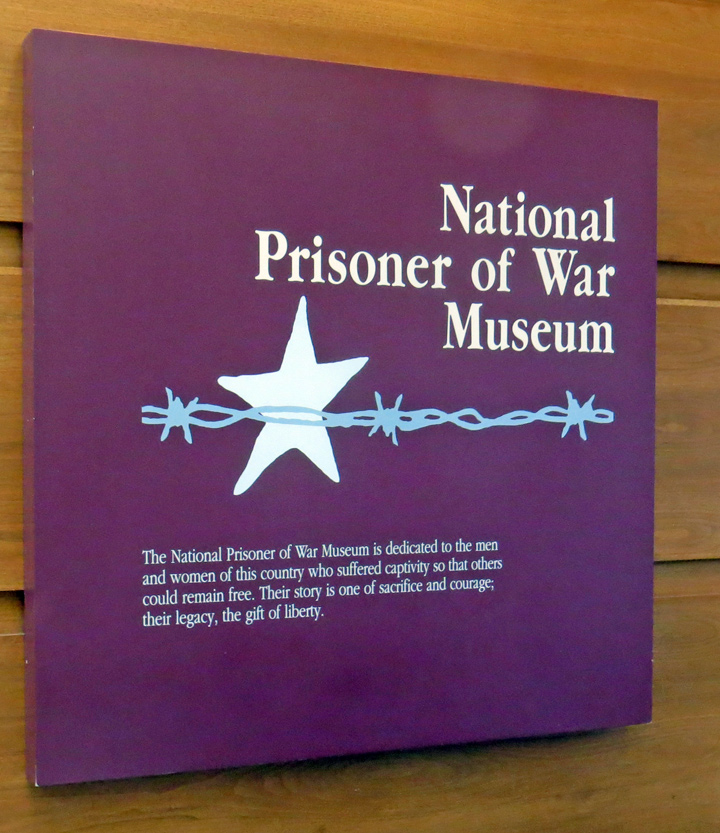
National Prisoner of War Museum
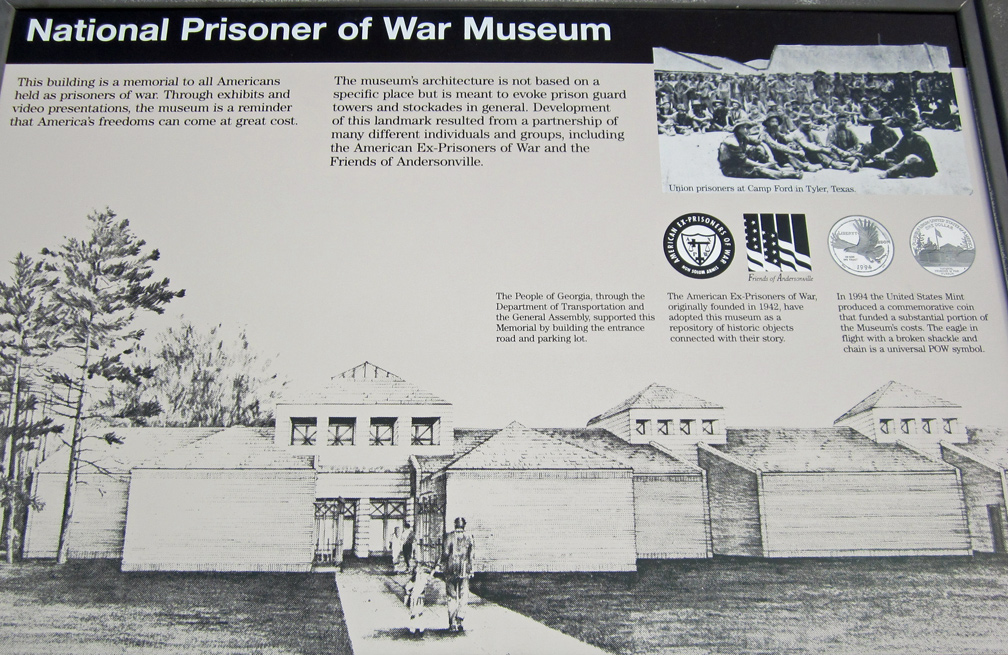
National Prisoner of War Museum
The National Prisoner of War Museum opened in 1998 as a memorial to all American prisoners of war. Exhibits use art, photographs, displays and video presentations to focus on the capture, living conditions, hardships and experiences of American prisoners of war in all periods. The museum also serves as the park's visitor center.
Text from Wikipedia
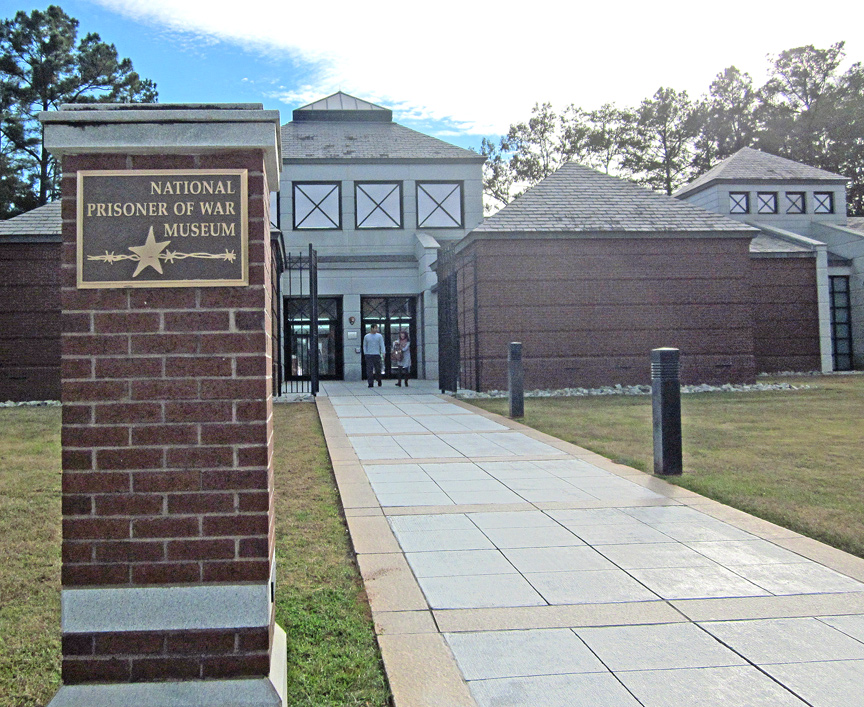
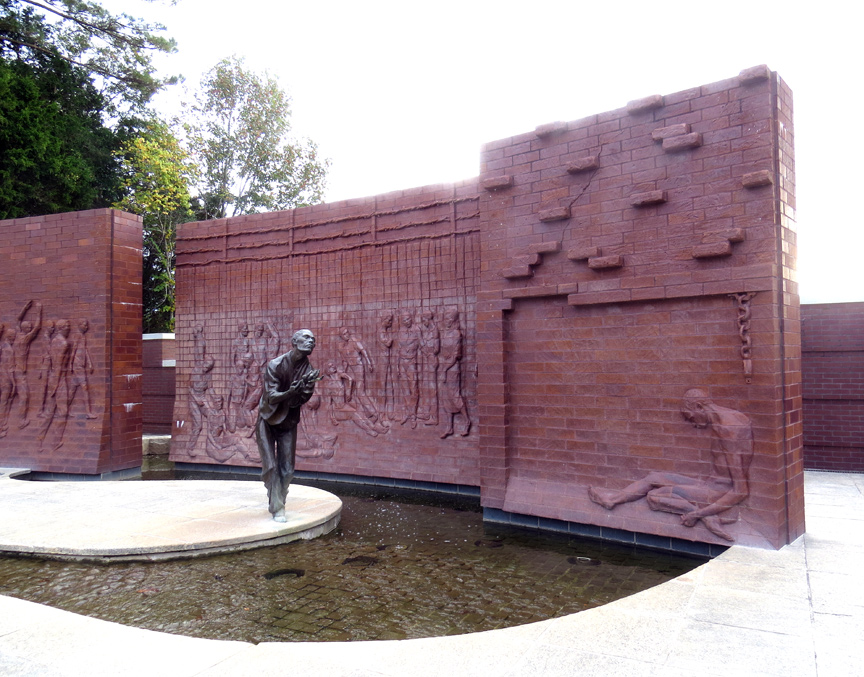
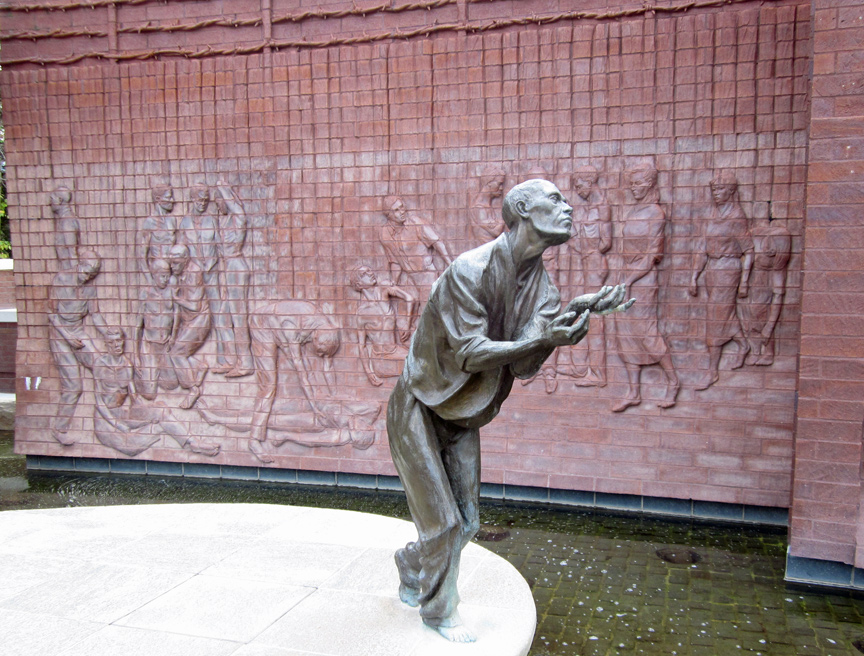
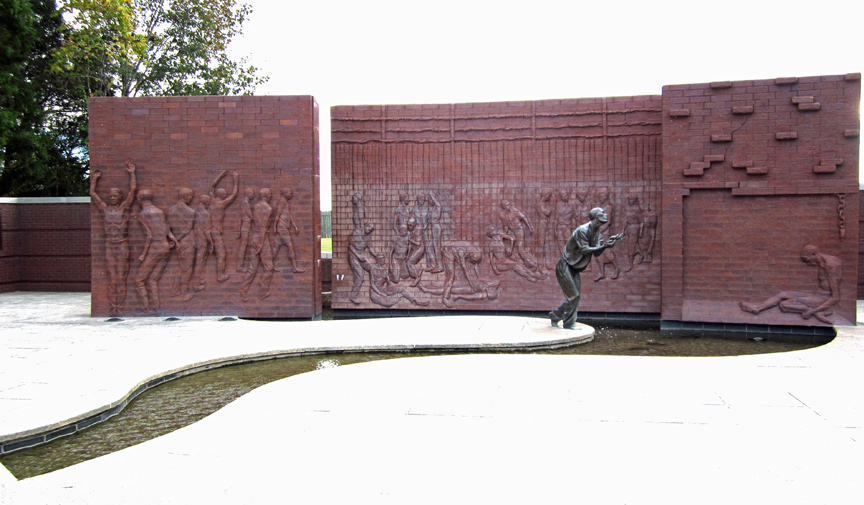
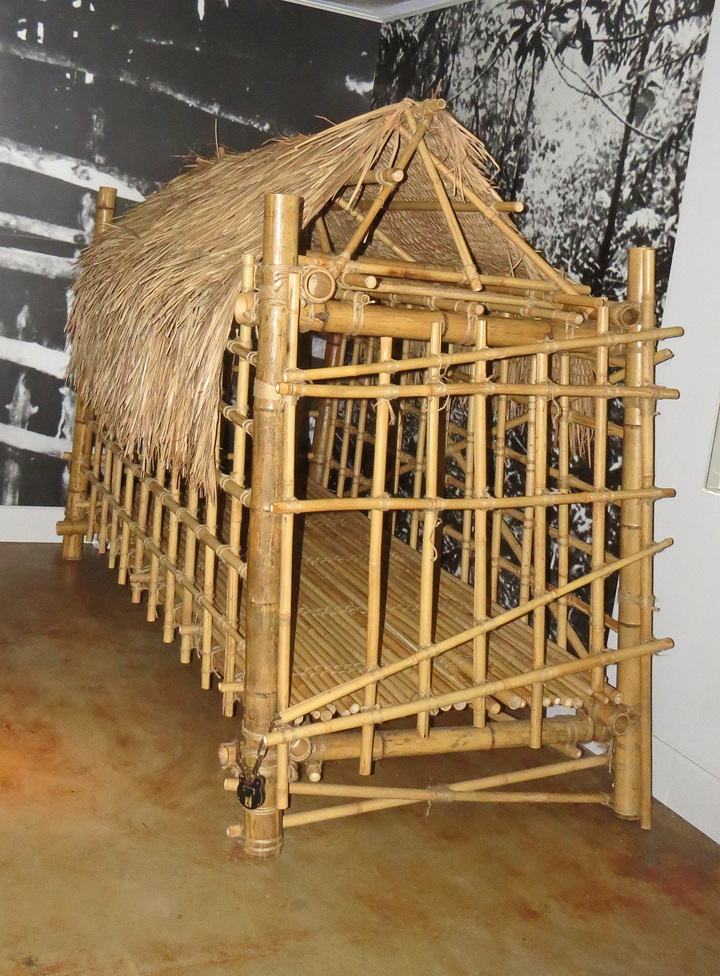
from the Vietnam war
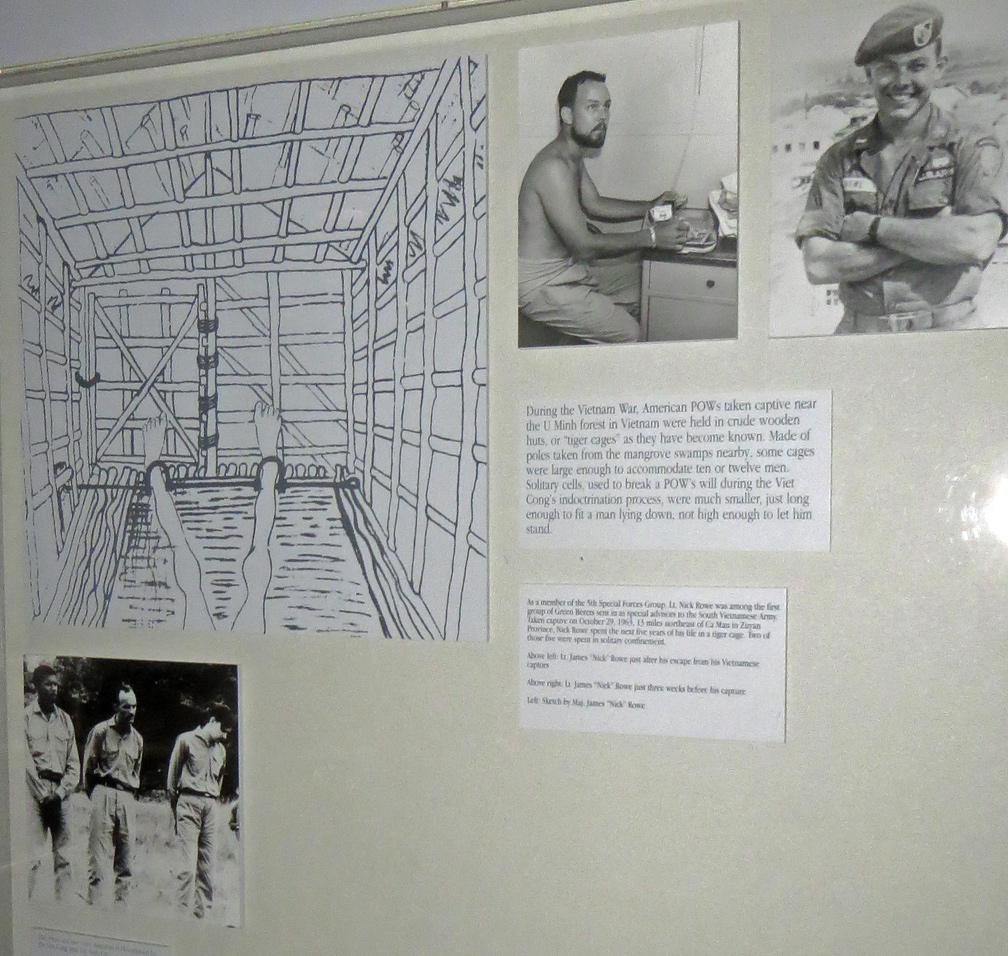
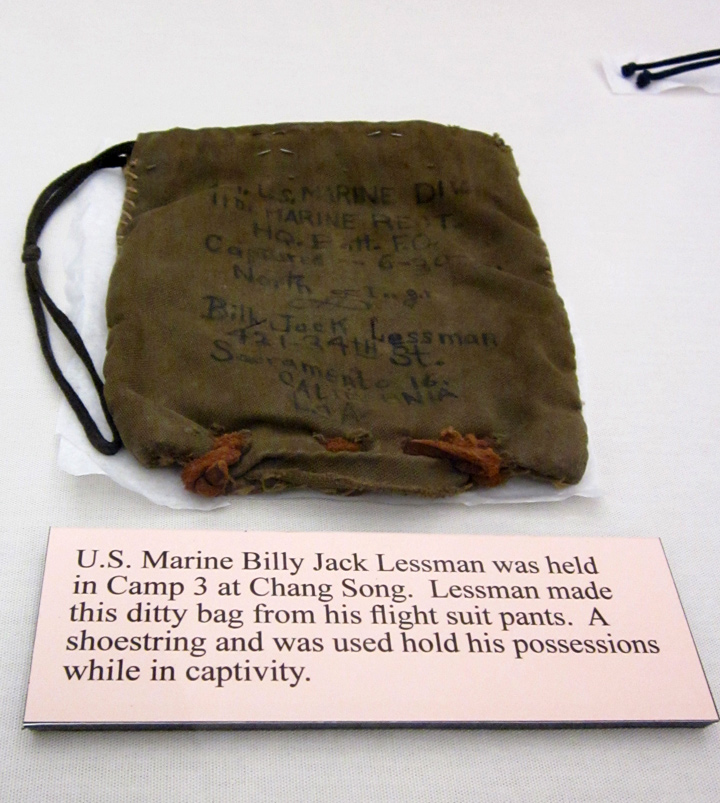
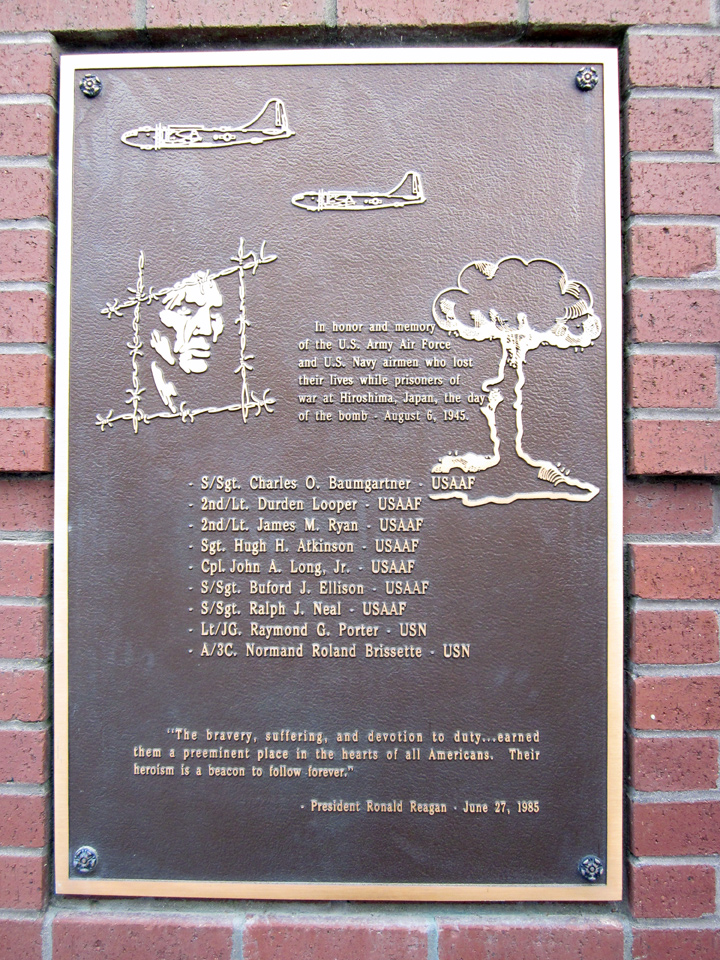
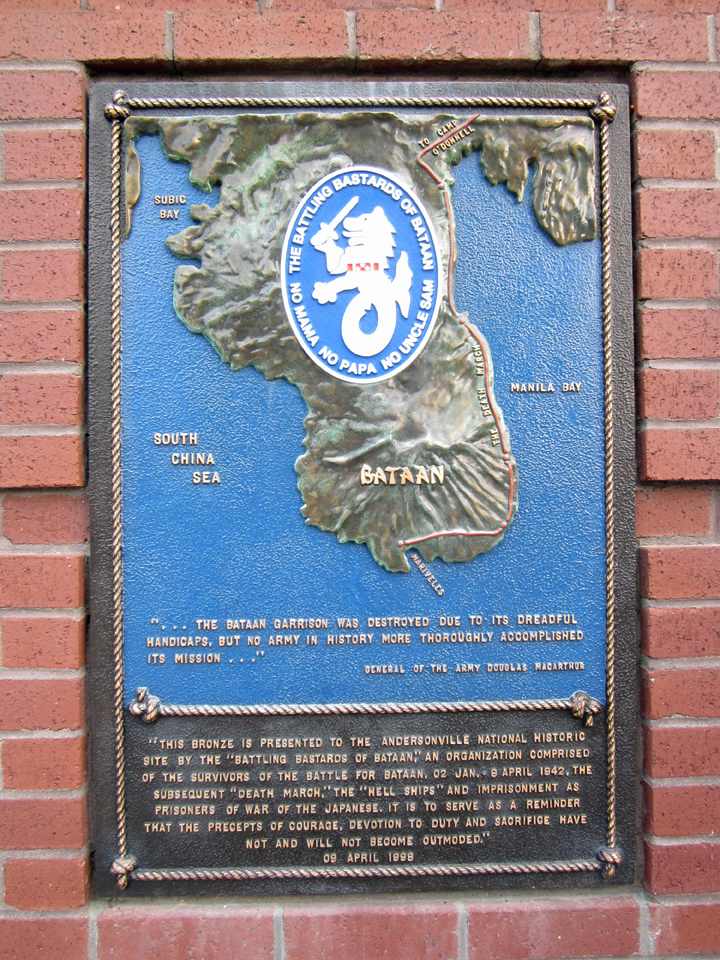
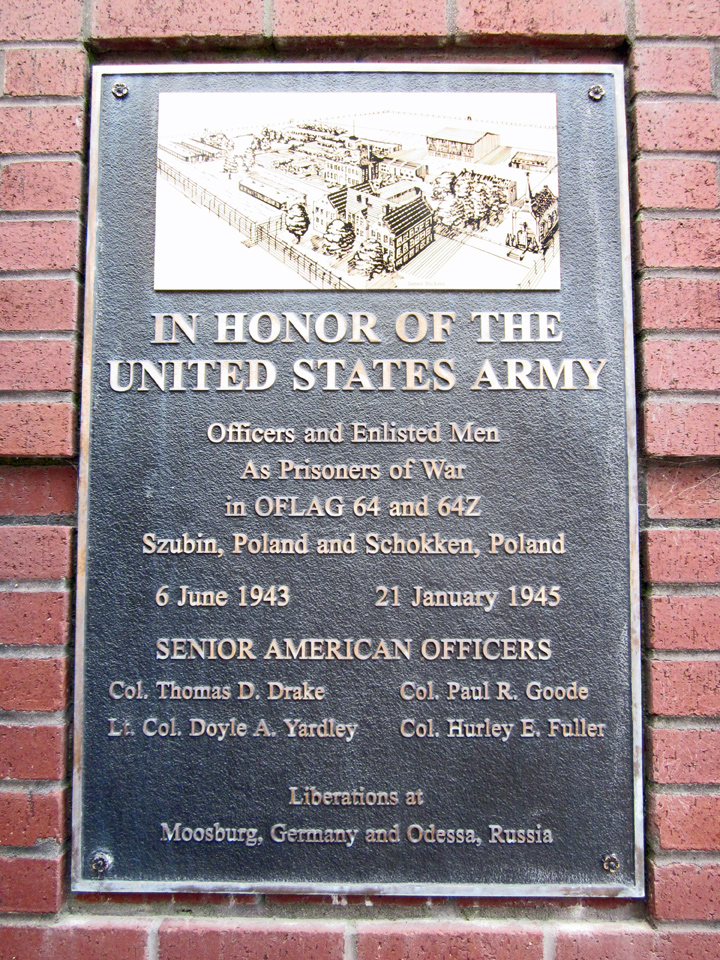
the Town of Andersonville
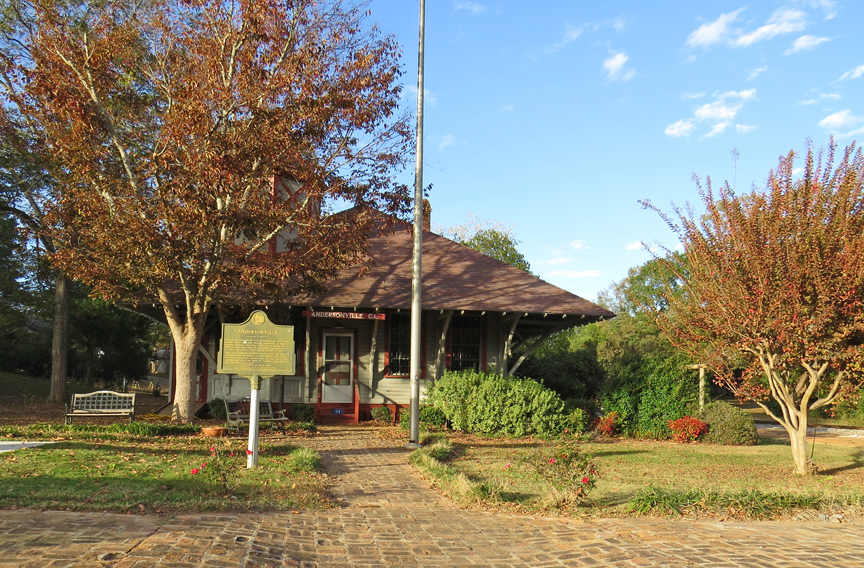

Civil War Village
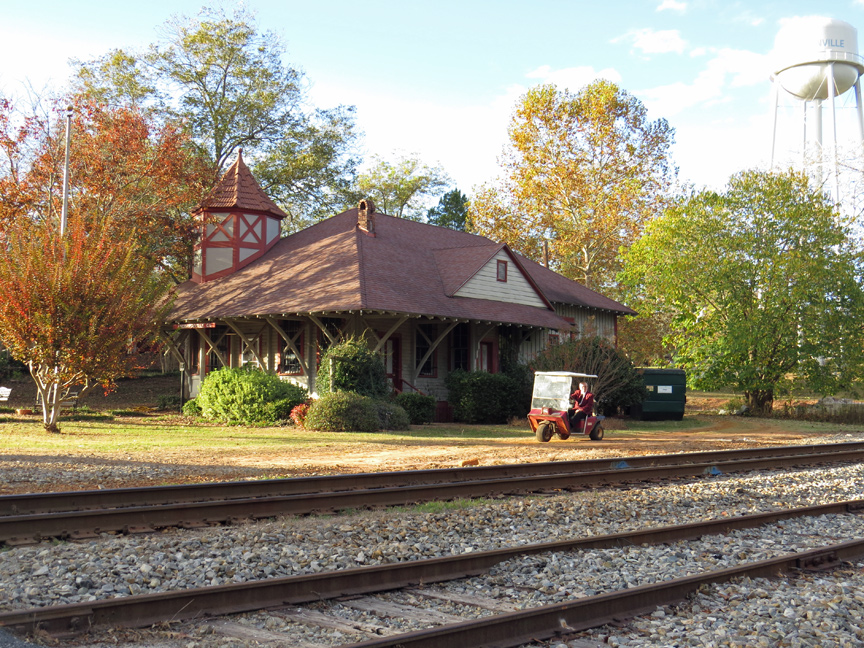
railroad station

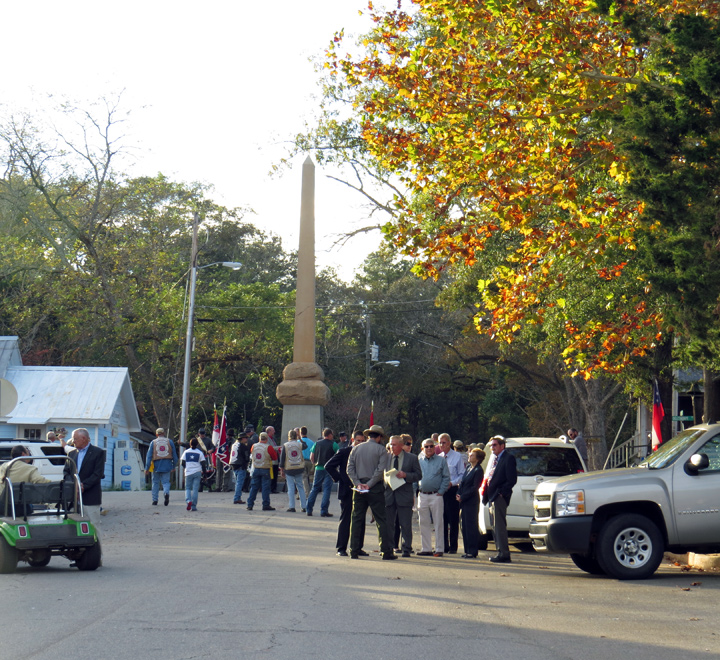
veteran meeting in town